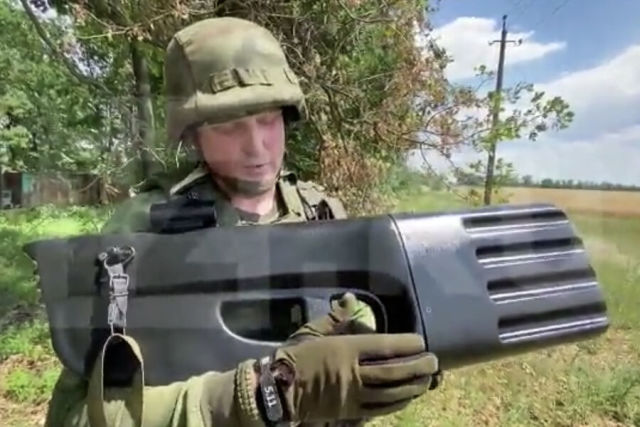The Bauman Moscow State Technical University told how the system of combating UAV "Stupor" works
During a special operation in Ukraine, the Russian military actively uses portable electromagnetic systems "Stupor", which are able to effectively attack drones from a short distance, depriving them of communication with the operator and disabling them. "Newspaper.Ru" together with experts, I understood the specifics of the tactics of the "anti-drone war".
In terms of its parameters and weight, the "Stupor" is comparable to an automatic weapon, for greater convenience, it is carried like a regular machine gun. The total length of the system is 1.16 m, the weight in the working position is 5.5 kg, it works on a single charge for up to 4 hours. The complex looks like a device with a plastic body of complex shape and can be equipped with two sights at once - collimator or optical, which is necessary to detect unmanned vehicles at a distance inaccessible to the naked eye.
The complex has a built-in suppression unit capable of jamming signals from almost any of the existing satellite navigation systems - American GPS, Chinese BeiDou, European Galileo and Russian GLONASS within a radius of two to five kilometers. It is also capable of blocking signals of mobile networks of various standards: GSM, 3G and LTE at a distance of up to a kilometer. Interference can be generated at frequencies of 900 MHz, 2.4 GHz and 5.2-5.8 GHz.
For the first time, the "Stupor" became known when it was demonstrated at the international military-technical forum "Army-2017". The Ministry of Defense of the Russian Federation has shown interest in compact electromagnetic weapons, while the head of the defense department, Sergei Shoigu, said that in order to adopt it, it must be tested - including in real combat operations in Syria. The details of the tests were not officially disclosed.
"The principle of operation of the new weapon is based on the use of ultra-high-frequency radiation, almost the same as in a microwave oven.
After that, it either falls or makes an emergency landing," he told the newspaper.En" military expert, associate professor of the Faculty of Robotics and Complex Automation of Bauman Moscow State Technical University Anatoly Makhnenko.
The expert added that powerful means of electronic warfare (EW), such as Krasukha-4, Leer-3, Moscow-1, "beat" for hundreds of kilometers (Moscow-1 controls the airspace for 400 km) and at the same time disable the electronics of both aircraft, and ground-based complexes, including artillery and rocket launchers, depriving them of targeted fire. However, such means, Makhnenko believes, are difficult and impractical to use against small drones.
"The APU is now very intensively using small-sized drones that perform the functions of aerial reconnaissance and fire correction. You can buy these in a store and set up a video camera with a transmitting signal or turn it into a "kamikaze" by hanging, for example, a grenade. It's already crowded with drones in the sky. There are a lot of hard-to-define ones," he noted in an interview with Gazeta.En" an officer of the DPR army with the call sign "Shaman".
Using standard air defense and missile defense systems against them is very expensive from an economic point of view.
"It is quite difficult to fight with such drones. Air defense systems, of course, detect and track them, but launching a missile at a visual reconnaissance drone is at least wasteful. Even the ZSU-23-4 "Shilka" does not make sense to drive around the field in pursuit of drones. It's like firing a cannon at sparrows. The purpose of the new development is to paralyze the actions of precisely small enemy air assets, for which it is a pity to spend missiles and projectiles," he told the newspaper.Ru" military expert, reserve Colonel Vladimir Popov.
Victor Sokirko


